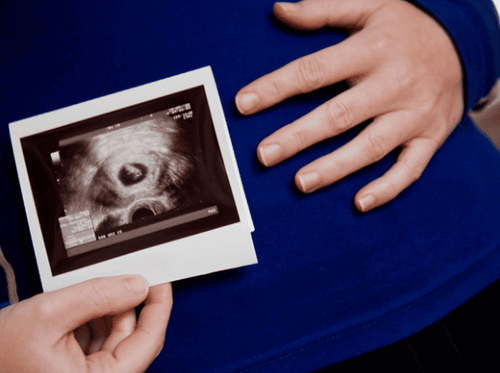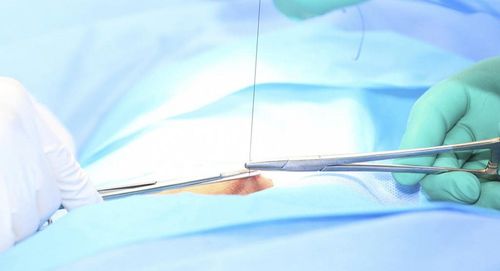This is an automatically translated article.
The article was professionally consulted with Specialist Doctor I Le Hong Lien - Doctor of Pregnancy Ultrasound - Department of Obstetrics and Gynecology - Vinmec Central Park International General Hospital.1. What is an empty ovary?
Empty ovaries, also known as non-embryonic ovaries, occur when a fertilized egg implants in the uterus but does not develop into an embryo. It is also known as a non-embryo pregnancy and it is the leading cause of miscarriage.Normally, around the first trimester of pregnancy, the fertilized egg will have an embryo and a gestational sac about 18mm wide. However, in the case of an empty egg, the gestational sac still forms and develops normally, but there is no embryo.
2. Causes of empty ovaries
Currently, medicine is still not able to conclude the exact cause of the empty egg pregnancy. However, there are several factors involved in stopping a pregnancy or causing an ovum, including:Disorders of chromosome 9

3. Signs of a non-embryo egg
If you have any of the following symptoms, chances are you are pregnant. For example: You have had a positive pregnancy test or missed your period. Then there are signs of miscarriage, such as: Abdominal cramps, vaginal bleeding or bleeding, menstrual bleeding more than usual.If you are experiencing any of these signs or symptoms, you may be having a miscarriage. But not all bleeding in the first trimester of pregnancy ends in miscarriage. So, be sure to see your doctor right away if you have any of the above symptoms

4. Diagnosis of non-embryonic ovaries
People with oocytes often think they have a normal pregnancy, which is understandable, since their levels of human chorionic gonadotropin (hCG) can increase.Placenta produces this hormone after implantation. With a silvered ovum, hCG can continue to rise because the placenta can grow for a short time, even without an embryo. Therefore, ultrasound testing is often necessary to confirm the diagnosis of a gestational sac.
5. Treatment of non-embryonic ovaries
If you've been diagnosed with non-embryonic ovary, talk to your doctor about what to do next. Some women choose to have an abortion. This surgery involves dilation of the cervix and intrauterine aspiration. Dilation and curettage immediately removes any remaining tissue, which can help you mentally and physically close. It can also be helpful if you want your doctor to examine the tissues to confirm the reason for the miscarriage. Using medication such as misoprostol may be an option. However, it can take several days for the body to get rid of all the tissue. With this medicine, you may have more bleeding and side effects. With both options, you may experience pain or cramping, but it can be treated. Other women prefer to skip medical or surgical management. They choose to let the body overcome the tissue on its own. This is primarily a personal decision, but discuss it with your doctor. After a miscarriage, your doctor may recommend waiting for at least one to three menstrual cycles before trying to conceive again.
Understand early signs of pregnancy, pregnancy poisoning, bleeding during pregnancy. Timely, correct and sufficient first prenatal check-up, avoiding too early/too late. Fetal malformation screening at 12 weeks detects dangerous fetal malformations that can be intervened early. Distinguish between normal vaginal bleeding and pathological vaginal bleeding for timely intervention to maintain pregnancy. Screening for thyroid disease in the first 3 months of pregnancy avoids dangerous risks before and during delivery. Vinmec currently has many maternity packages (12-27-36 weeks), in which the 12-week maternity package helps monitor the health of mother and baby right from the beginning of pregnancy, early detection and timely intervention of health issues. In addition to the usual services, the maternity monitoring program from 12 weeks has special services that other maternity packages do not have such as: Double Test or Triple Test to screen for fetal malformations; Quantitative angiogenesis factor test to diagnose preeclampsia; thyroid screening test; Rubella test; Testing for parasites transmitted from mother to child seriously affects the baby's brain and physical development after birth.
For more information about the 12-week maternity package and registration, you can contact the clinics and hospitals of Vinmec health system nationwide.
Please dial HOTLINE for more information or register for an appointment HERE. Download MyVinmec app to make appointments faster and to manage your bookings easily.
Reference sources: mayoclinic.org, webmd.com













